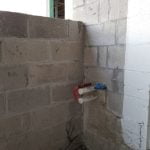Are you wondering, “Can I claim home improvements on my tax return?” Home improvements can have a significant impact on your taxes, and it is important to understand how they may qualify for tax deductions. It’s essential to familiarize yourself with the rules and regulations surrounding tax benefits for home improvements to ensure that you are maximizing your potential savings.
Home improvements encompass a wide range of projects aimed at enhancing the functionality, aesthetics, or energy efficiency of a property. Understanding the eligibility of these improvements for tax deductions is crucial for homeowners looking to offset some of the costs associated with these renovations. By claiming eligible home improvements on your tax return, you may be able to reduce your taxable income and potentially receive a lower tax bill.
When considering whether you can claim home improvements on your tax return, it’s important to take into account specific criteria and documentation requirements. By gaining a thorough understanding of the rules governing this process, homeowners can confidently navigate their tax returns and make well-informed decisions regarding their eligible home improvement expenses.
Stay tuned as we delve deeper into the types of home improvements that may qualify for tax deductions and provide insights into maximizing potential savings through smart planning.
Types of Home Improvements That May Be Eligible for Tax Deductions
When it comes to claiming home improvements on your tax return, it’s important to understand which types of projects may be eligible for tax deductions. While not all home improvements qualify for tax benefits, there are specific categories of improvements that can potentially provide you with valuable tax savings.
One type of home improvement that can result in tax deductions is the installation of energy-efficient upgrades. This includes items such as solar panels, energy-efficient windows and doors, and high-efficiency heating and cooling systems. The government offers tax incentives to encourage homeowners to make environmentally friendly upgrades to their homes, so these types of improvements can often be claimed on your tax return.
Another category of home improvements that may be eligible for tax deductions is medical renovations. If you have made modifications to your home for medical reasons, such as installing ramps or handrails, or making other accessible improvements, you may be able to claim these expenses on your tax return. It’s important to note that these medical renovations must be prescribed by a doctor in order to qualify for tax deductions.
Furthermore, certain home improvements classified as “capital improvements” that increase the value of your property can also potentially be claimed on your tax return when you sell your home. These could include additions or significant upgrades like a new roof or a remodeled kitchen.
In summary, when considering whether you can claim home improvements on your tax return, it’s essential to understand the different types of projects that may be eligible for tax deductions. Energy-efficient upgrades and medical renovations are just a few examples of home improvements that can potentially provide valuable tax benefits.
| Eligible Home Improvements | Tax Deduction Potential |
|---|---|
| Energy-efficient upgrades (solar panels, windows, HVAC systems) | Potential for valuable tax savings due to government incentives |
| Medical renovations (ramps, handrails) | Can be claimed if prescribed by a doctor for medical reasons |
| “Capital improvements” (additions or significant property value-increasing upgrades) | Potentially deductible when selling the property through increased basis |
Ultimately determining what “counts” as a qualifying deduction will often depend on not only IRS regulations but also state laws and individual circumstances. As such maintaining accurate records and seeking professional advice if unsure is highly advisabe.
Requirements for Claiming Home Improvements on Your Tax Return
When it comes to claiming home improvements on your tax return, there are specific requirements that need to be met in order to qualify for deductions. It’s essential to understand these criteria and ensure that you have all the necessary documentation and proof to support your claim. One of the most common questions people ask is, “Can I claim home improvements on my tax return?” The answer is yes, but there are certain conditions that need to be satisfied.
First and foremost, in order to claim home improvements on your tax return, the work done must be considered a capital improvement. This means that the changes made to your home must increase its value, prolong its useful life, or adapt it to new uses. Examples of such improvements include adding a new room, renovating a kitchen or bathroom, or installing a new heating system. Routine repairs and maintenance do not typically qualify for tax deductions.
In addition to meeting the capital improvement criteria, you must also maintain thorough documentation of the expenses incurred during the home improvement project. This includes contracts, receipts, invoices, and any other relevant paperwork that can serve as evidence of the work done and the costs involved. Without proper documentation, your claim for home improvements on your tax return may be denied. Therefore, it is crucial to keep accurate records to substantiate your deduction.
Limitations and Restrictions on Claiming Home Improvements
When it comes to claiming home improvements on your tax return, there are certain limitations and restrictions that you need to be aware of. Understanding these limitations can help avoid potential issues with the IRS and ensure that you are accurately reporting your eligible deductions.
Types of Home Improvements Eligible for Tax Deductions
First and foremost, it is important to note that not all home improvements are eligible for tax deductions. The IRS has specific guidelines on what qualifies as a deductible improvement. Generally, eligible home improvements are those that add value to your home or make it more energy-efficient.
Exclusions and Circumstances Where Deductions May Not Apply
It’s also crucial to understand that there are circumstances where home improvements may not be eligible for tax deductions. For example, any improvements made for personal taste or reasons unrelated to medical necessity or energy efficiency typically do not qualify for these deductions.
Documentation and Proof Required
In order to claim home improvements on your tax return, you will need proper documentation and proof of the expenses incurred. This may include receipts, contracts, and other records that demonstrate the cost of the improvement and its eligibility for a tax deduction. Without this documentation, your claim may be denied by the IRS.
Can I Claim Home Improvements on My Tax Return
provide personalized guidance based on your individual circumstances and applicable tax laws.
How to Calculate and Report Home Improvements on Your Tax Return
When it comes to claiming home improvements on your tax return, it is essential to understand how to calculate and report these expenses accurately. Failing to do so could result in potential errors on your tax return, leading to audits or penalties. Here’s a step-by-step guide on how you can calculate and report home improvements on your tax return.
Step 1: Gather Documentation
The first step in calculating and reporting home improvements on your tax return is to gather all the necessary documentation. This includes receipts, invoices, and any other proof of payment for the improvement projects. It is crucial to have valid documentation to support your claim in case of an audit by the IRS.
Step 2: Determine Eligible Expenses
Next, you will need to determine which home improvement expenses are eligible for tax deductions. Typically, only certain types of improvements such as energy-efficient upgrades or medical renovations qualify for tax deductions. Review the IRS guidelines or consult with a tax professional to ensure that your expenses meet the criteria for eligibility.
Step 3: Calculate Your Deduction
Once you have identified the eligible expenses, you can then calculate the amount that can be claimed as a deduction on your tax return. Depending on the nature of the home improvement project, there may be specific formulas or guidelines provided by the IRS for calculating the deduction amount.
By following these steps and ensuring accurate calculations and reporting of home improvements on your tax return, you can avoid potential mistakes and maximize your tax deductions. Consulting with a qualified tax professional can also provide valuable guidance and assistance in this process.
Potential Tax Benefits and Credits for Home Improvements
When considering home improvements, it’s important to be aware of the potential tax benefits and credits that may be available to homeowners. Taking advantage of these incentives can help reduce the overall cost of your home improvement projects and provide valuable tax savings. Here are some potential tax benefits and credits that you can take advantage of:
- Energy-efficient upgrades: Making energy-efficient improvements to your home, such as installing solar panels or replacing old windows with energy-efficient ones, can make you eligible for the Residential Energy Efficient Property Credit.
- Medical renovations: If you make home improvements for medical reasons, such as installing ramps or widening doorways for wheelchair access, you may be able to claim a portion of these expenses as a medical expense deduction on your tax return.
- Home office deductions: If you use a portion of your home regularly and exclusively for business purposes, you may be eligible for a home office deduction for certain expenses related to the use of that space.
In order to take advantage of these tax benefits and credits, it’s crucial to keep detailed records and documentation of your home improvement projects. This can include receipts, invoices, contracts, and other evidence that supports the costs incurred for the improvements. Additionally, it’s important to ensure that the improvements meet the specific criteria set by the IRS in order to qualify for these tax incentives.
By claiming these potential tax benefits and credits on your tax return, you can i claim home improvements on my tax return reduce your overall tax liability and potentially receive a higher refund. However, it’s advisable to consult with a qualified tax professional or accountant to ensure that you are maximizing all available deductions and credits while remaining in compliance with IRS regulations.
They can provide personalized advice based on your individual circumstances and help navigate the complex rules surrounding home improvement tax deductions.
Common Mistakes to Avoid When Claiming Home Improvements on Your Tax Return
When it comes to claiming home improvements on your tax return, there are certain common mistakes that you’ll want to avoid in order to maximize your deductions and ensure compliance with tax laws. Here are some key mistakes to watch out for:
- Not keeping accurate records: One of the most crucial aspects of claiming home improvements on your tax return is maintaining thorough and accurate records of the expenses incurred. This includes receipts, invoices, and any other relevant documentation that supports the cost of the improvement.
- Claiming ineligible expenses: It’s important to understand what types of home improvements are actually eligible for tax deductions. While certain projects like energy-efficient upgrades and medical renovations may qualify, other general maintenance or repair costs typically do not.
- Overestimating the value of improvements: When calculating your tax deduction for home improvements, it’s essential to accurately assess the increase in your property’s value as a result of the improvement. Overestimating this value can lead to discrepancies in your tax return.
To avoid these mistakes and ensure that you’re maximizing your tax deductions while staying within legal boundaries, it’s important to consult with a qualified tax professional. They can provide guidance on navigating the complexities of claiming home improvements on your tax return, help verify the eligibility of your expenses, and ensure that all necessary documentation is in place before filing.
Seeking professional assistance when dealing with home improvement tax deductions can ultimately save you time, stress, and potentially money in the long run. By taking proactive measures to avoid common errors and relying on expert advice, you can confidently claim eligible home improvements on your tax return without fear of unnecessary complications.
Consult a Tax Professional for Assistance With Claiming Home Improvements
In conclusion, understanding the nuances of claiming home improvements on your tax return is crucial for maximizing potential deductions and benefits. Certain types of home improvement projects can indeed be eligible for tax deductions, such as energy-efficient upgrades and medical renovations. However, it is essential to meet specific criteria and provide proper documentation to support your claims.
When it comes to calculating and reporting home improvements on your tax return, following a step-by-step guide is necessary to ensure accuracy. Additionally, being aware of any limitations or restrictions on the types of home improvements that can be claimed will prevent any potential errors or oversights. It is important to note that seeking professional advice from a qualified tax professional can be beneficial in navigating the complexities of claiming home improvements on your tax return.
Maximizing the potential tax benefits and credits for certain home improvements can ultimately have a significant impact on your overall tax liability. Therefore, avoiding common mistakes when claiming home improvements and consulting with a tax professional can lead to a more advantageous outcome. In summary, educating yourself on the requirements, limitations, and calculations related to claiming home improvements on your tax return can help ensure that you receive all eligible deductions and benefits while adhering to relevant regulations.
Frequently Asked Questions
Can I Deduct Home Improvements on My Tax Return?
Generally, you cannot deduct home improvements on your tax return. However, some home improvements that are considered medical expenses or that add to the value of your home may be eligible for a tax deduction.
What Is Tax Deductible for Homeowners?
Tax-deductible expenses for homeowners include mortgage interest, property taxes, home office expenses, energy-efficient home improvements, and certain medical home improvements if they exceed a certain percentage of your income.
Is Home Insurance Tax Deductible?
Home insurance is typically not tax-deductible for personal residences. However, if you use part of your home for business purposes or rent out a portion of it, you may be able to deduct a portion of your homeowners insurance as a business expense on your tax return.

I’m thrilled to have you here as a part of the Remodeling Top community. This is where my journey as an architect and remodeling enthusiast intersects with your passion for transforming houses into dream homes.





